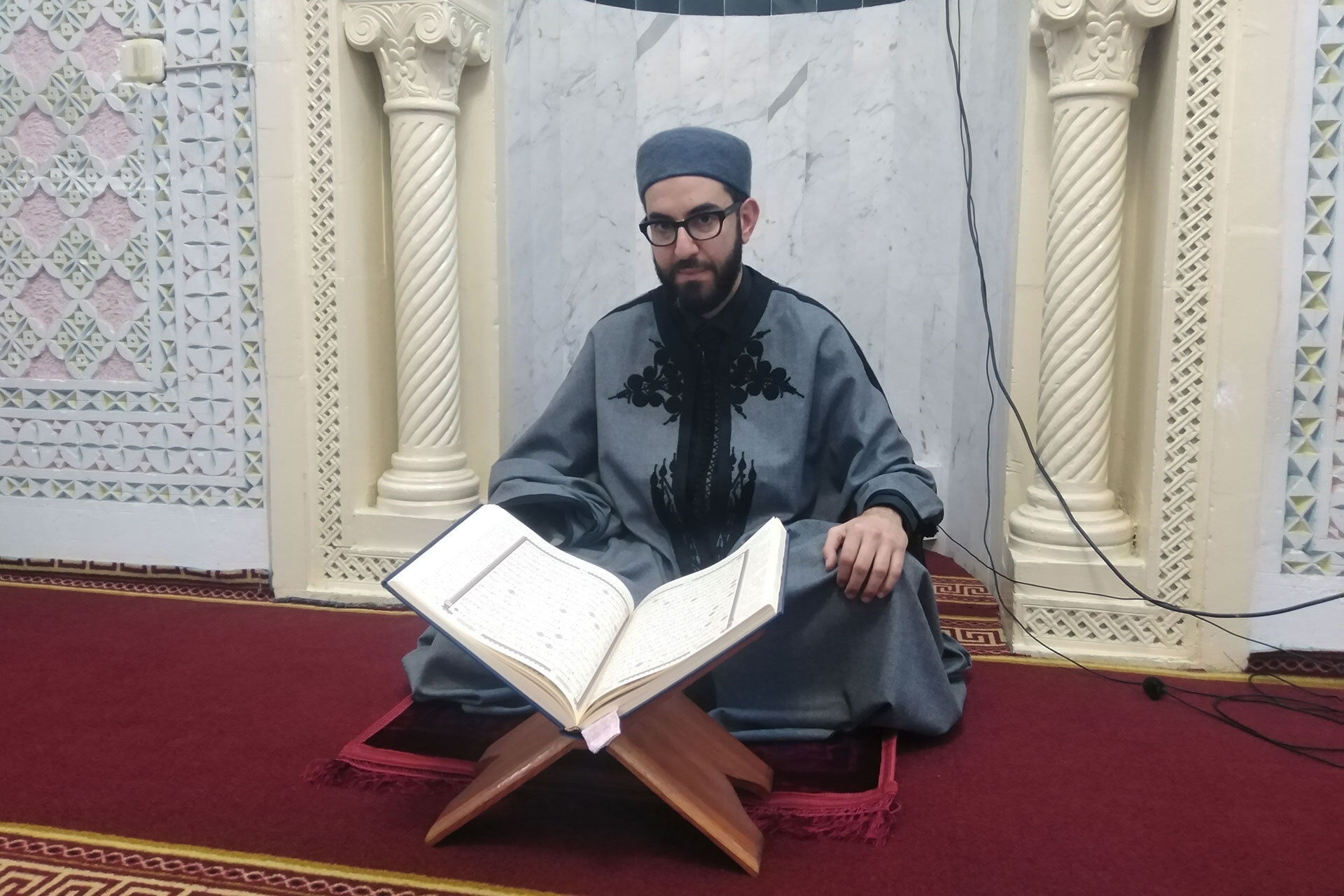TUNIS- With his sweet and powerful voice, the late Tunisian reciter Sheikh Ali Al-Buraq occasionally overlooks Tunisians through the call to prayer and the Holy Quran broadcast on national television, bringing them back to the atmosphere and fragrance of the holy month of Ramadan, many of whom do not know that the tones used are authentic Tunisian.
Al-Buraq (1899-1981) is the one in which the late Egyptian writer Taha Hussein said, "His voice takes us back to the first time of the revelation of the Qur'an and the beginning of Arab civilization."
The Tunisian method depends on the editions (maqamat) and Tunisian tones in chanting and intonation and appeared since the seventies, and flourished in the late eighties with the late Buraq, "who is considered the most reader known for the Tunisian tone," says Sheikh Tunisian reader Hamza Mohammed Jarraya to Al Jazeera Net.
He adds that the most common forms used in religious chanting in Tunisia are Al-Hussein, Rasd Al-Dhil, Al-Mahir Iraq, Al-Mahir Sika, Al-Mazmoum and others, stressing the need for their proper and smooth employment and for the transitions to be deliberate in order to take into account the provisions of intonation and recitation and not violate them.
Tunisian identity
Jarraya added that these editions represent the Tunisian identity, which emerges as soon as the reciter hears the recitation of the Holy Quran, and some tones of Tunisian music were adopted in the recitation, such as the printing of Hussein in the song "Anzad (born) the Prophet" and the printing of the two fingers in the song "Ya Dini Ma Ahlani Farha", taking into account the rules of recitation.
As for the Tunisian tone techniques, they are based on certain musical scales with specific degrees and avoidance of others, highlighting certain transitions with the use of some different motifs from Tunisia or Egypt and the Gulf.
Reader Hamza Mohamed Jarraya explains that the listener of the Tunisian chant feels that it is "out of the popular audio heritage that we were raised on in our weddings and weddings".
Responsibility to maintain
He held the responsibility for preserving the Tunisian way of chanting, intonation and Sufi chanting readers and imams, headed by Ali Al-Buraq, who has a complete seal in the Tunisian editions, Abdelmajid Memghli, Ahmed Al-Shehimi, Mokhtar Saqangi, Othman Al-Andari, Munther Al-Jadi, Mounir Sliti and Elias Belnour.
Among the generation of young imams who took the torch from their teachers in performing the Tunisian tune and seek to preserve it are Hamza Mohamed Jarraya, Omar Ben Arabiya, Sofiane Cherif and Larbi Al-Kathiri.
The status of recitation and intonation in the Tunisian formula varies between the past and the present, as the Tunisian state after independence imposed the recording of the Holy Qur'an in Tunisian tones and styles only, but gradually turned a blind eye to this issue and the recording prevailed in the Egyptian and Gulf oriental way, Jarraya confirms.
He said there are some Tunisian seals, such as those of Sheikhs Mounir Sliti and Munther al-Jadi, "but they are rarely broadcast only seasonally during the holy month of Ramadan, which affects Tunisian public taste".
Even the tapes, memory cards and CDs sold in the markets are all for Gulf and Eastern recitations, he said, stressing that "despite the great influence of foreign readers on Tunisian public taste, there are Tunisian imams who are keen to impose the Tunisian character in reading the Holy Quran."
The decline of the presence of the Tunisian way
He attributes the decline in the presence of the Tunisian order today to its lack of adoption in the teaching of the Holy Quran, "as more than 95% of sheikhs study either without using tones at all or using an oriental tone".
In his opinion, this is because the Tunisian way of the Qur'an is not easy, and most sheikhs "prevail over the judgment of intonation, especially from the generation of the nineties who studied with imams and readers with licenses from outside Tunisia, from Syria, Egypt and Saudi Arabia, so you find them reading the eastern way."
He stresses that the Tunisian method of recitation and Sufi chanting was limited to occasions or in the call to prayer by Ali Al-Buraq or Ahmed Al-Shehimi only, and that Tunisian singers insist on adopting it despite the presence and influence of Syrian, Egyptian and Moroccan bands today in Tunisia.
Tunisian Tone
Hamza Mohamed Jarraya believes that imposing and reviving the Tunisian tone in recitation and intonation is a matter of determination, the will of the people, the religious framework, and more efforts to spread it sufficiently in all regions of the country.
To achieve this, he calls for the need to organize periodic and continuous training courses in the Tunisian way and to impose their teaching, application and education after the graduation of imams and readers, and says that "the Tunisian way must be the tyrant and not the Eastern."
He considers that "some of the courses that took place were not organized enough, as the turnout fades day by day, and with it the desire to revive the Tunisian tone, and we no longer know it except with the late Ali Al-Buraq, and even those who tried to apply it imitated him, and creativity was absent in the way of performance," according to his statement.
Throughout the year, imams should receive lessons in tunes and maqams, and improve the use of sound and performance techniques "because we have great energies", he said.
The Ministry of Religious Affairs should require the imam to recite the Koran in the Tunisian tone at least one of the prayers so that mosque-goers can become familiar with it, he said, "because many people consider this tone to be heresy and singing because they are not used to hearing it".

